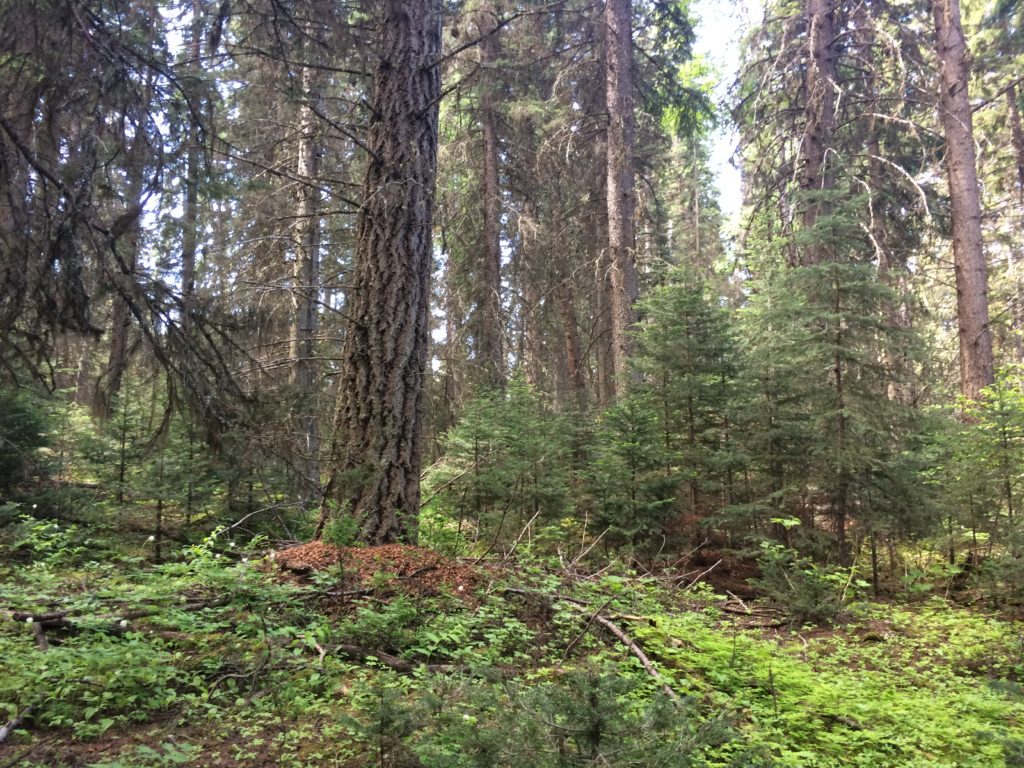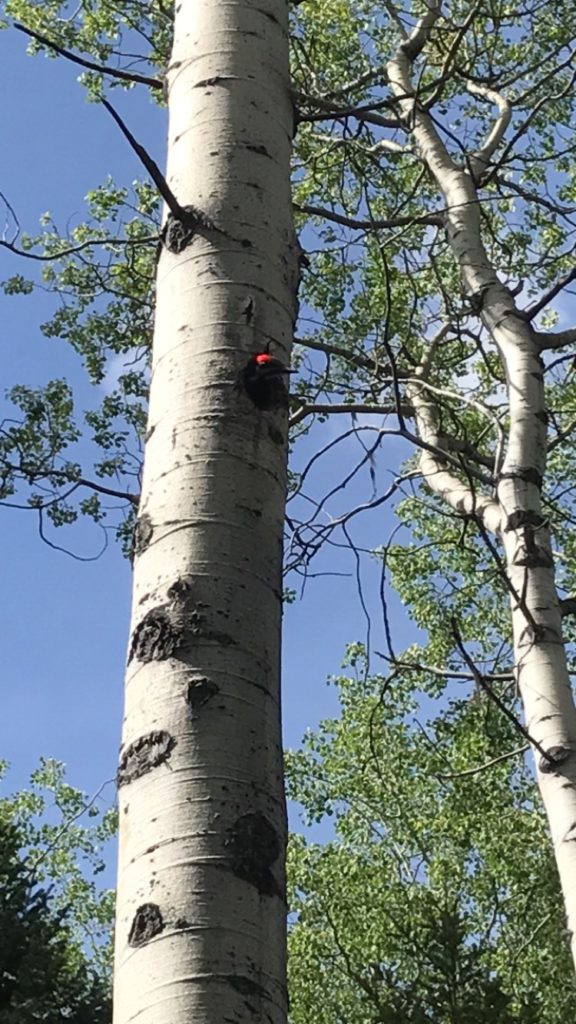Managing for Migratory Bird Incidental Take and Pre Harvest Risk Assessment
25 août 2017 14:36 Laisser vos pensées
Throughout the summer one of the common tasks that we were given was to walk cutting permits that were scheduled for harvest to search for migratory bird nests in order to mitigate incidental take of potential bird nests during harvest. This involved thoroughly walking through each block in search of cavity nests and stick nests. If we noticed any type of bird activity, like feeding holes on a tree, we will closely examine the tree to see if we could see any type of cavity that a bird could potentially be nesting in. We will then scratch the tree simulating animal activity, to see if the nest was active. If we found that the nest was in fact active then we were tasked with buffering that particular tree with a 30 metre buffer as not to disturb the nesting birds. An active stick nest would require buffering the nest by at least 100 metres. If however, we found that the nest is inactive we would still mark the tree in an effort to preserve it and preserve it as a wildlife tree.
Walking a block in search of a nest is a bit like looking for a needle in a haystack. The idea here is the more times that a block is walked there is a greater likelihood that any potential nests will be discovered. The intention is to reduce the risk of incidental take of any nests. West Fraser has developed a procedure and field card that is given to all contractors that can be used to determine each cutblock’s risk level, this is typically based on habitat type and proximity to water. There are then a number of best management practices that can be completed to reduce the risk level of each block. The idea is to reduce the risk level of each block to a low ranking.
Best management practices can be taken at both the layout stage and the operational stage. Completing migratory bird checks prior to harvest is one of these best management practices that helps to reduce this risk. Other layout best management practices include patch retention, high value snag/wildlife tree retention, riparian area management, and species at risk.
It is great to see that forestry companies like West Fraser are implementing environmental operating procedures for things like migratory birds. It really demonstrates the commitment within the industry to ensuring that we are managing for a many different values and services that our forests provide and not strictly for timber value.


